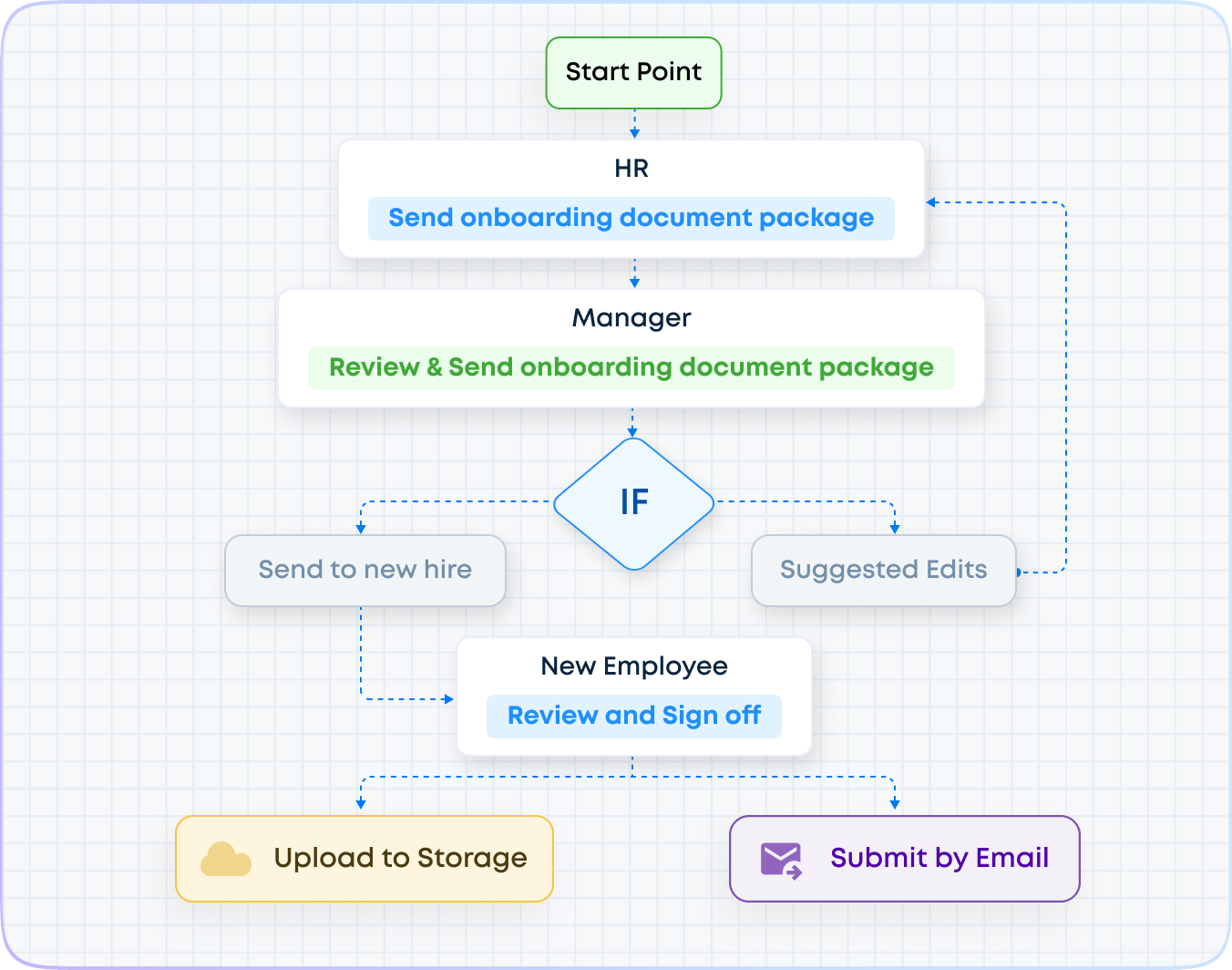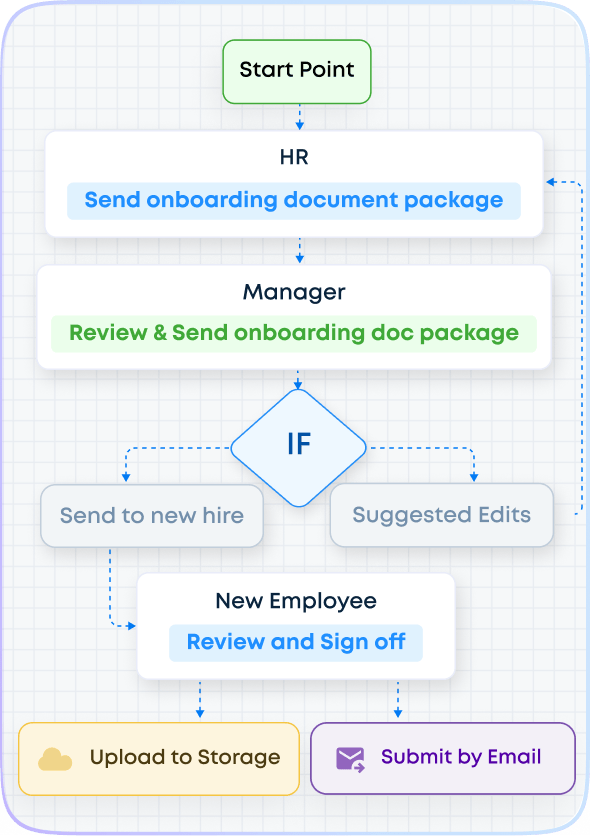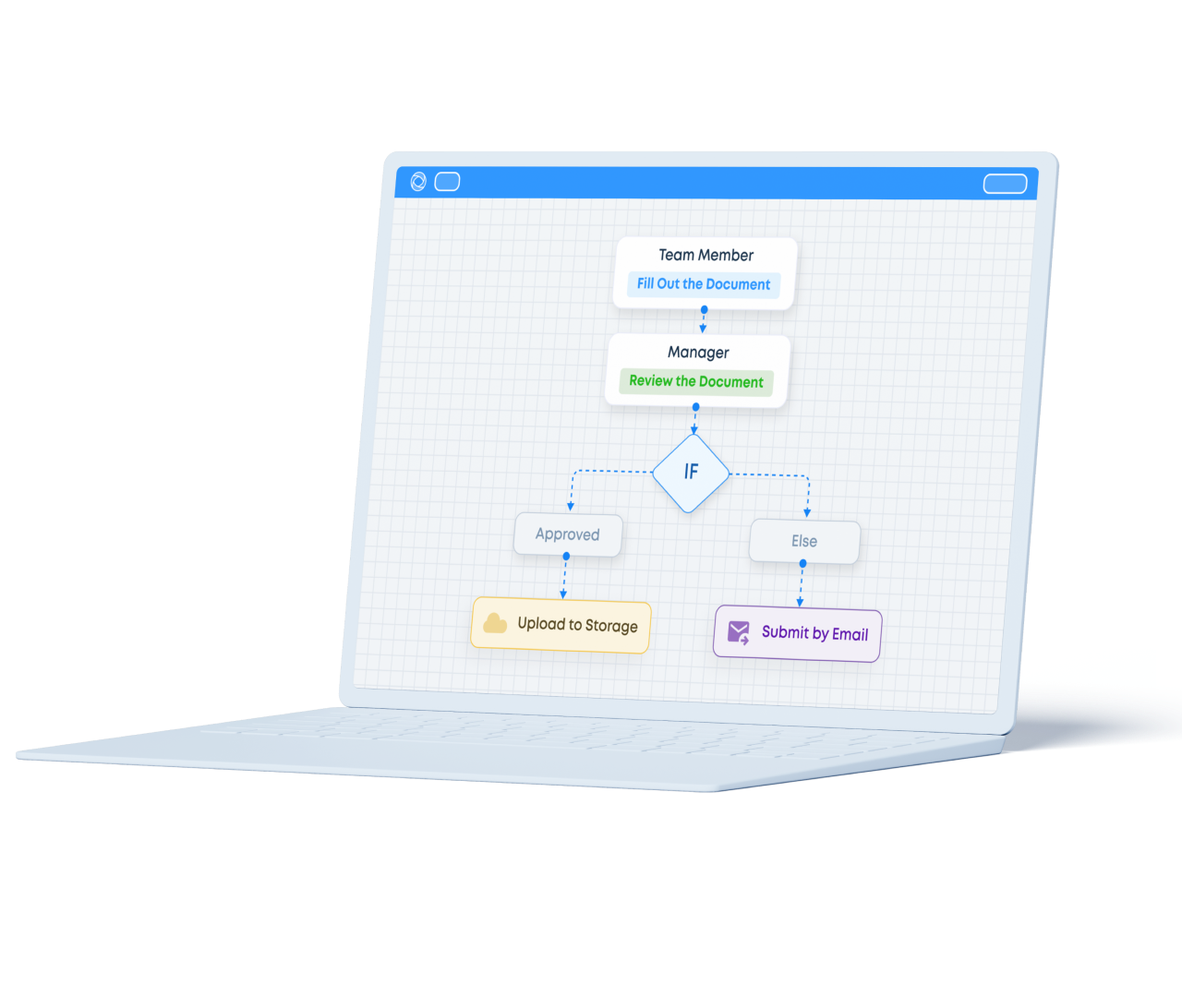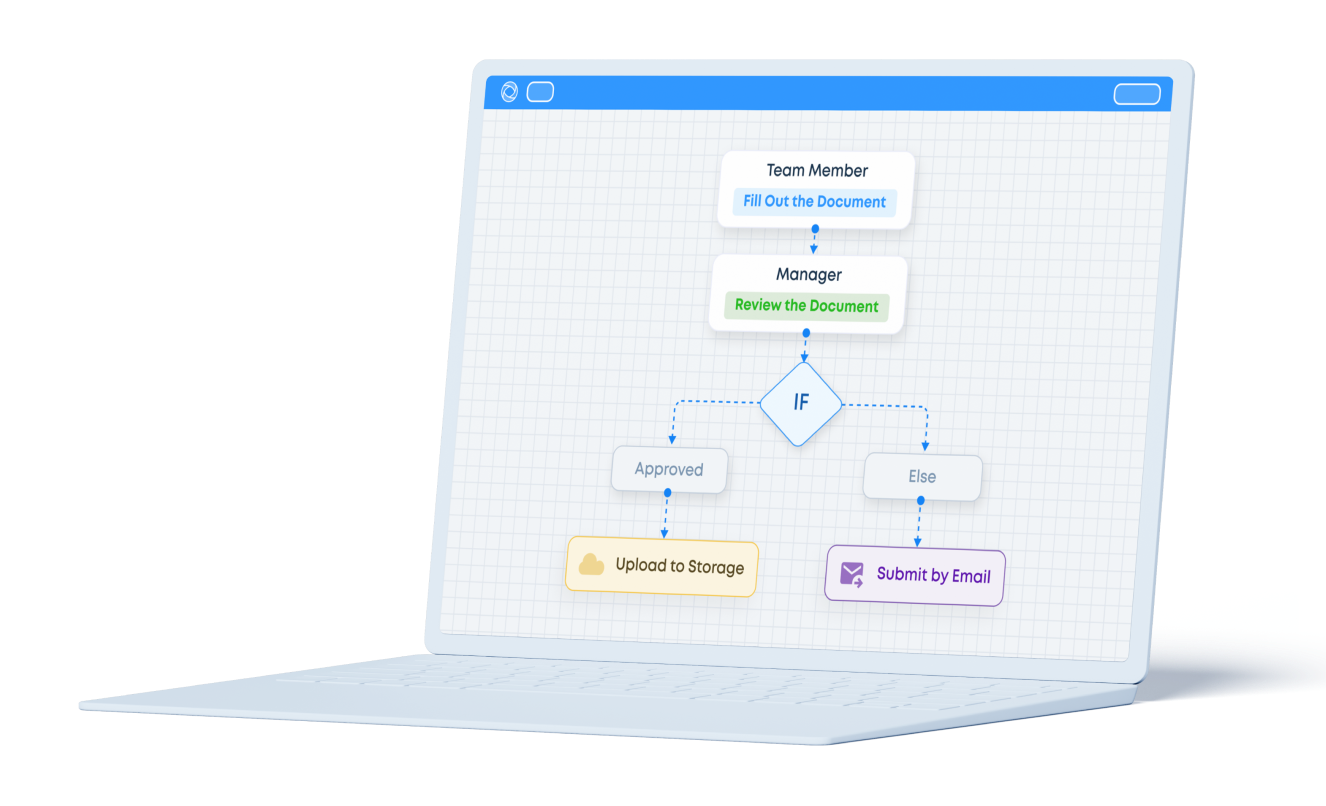1. What Is the Onboarding Process?
The onboarding process is an umbrella term that encompasses new hire paperwork and a detailed introduction to your company.
It aims to swiftly integrate new hires into existing teams, providing the information, training, and tools they need to become productive members.
When developing an onboarding workflow, the first thing to consider is the new employee’s perspective. What questions would you have about your company, its structure, and role-specific expectations? What would make you feel like a welcome addition and empower you to perform your role successfully?
Organizations define onboarding procedures differently. Many companies consider onboarding complete when the new hire begins making actual contributions, while others may take up to 18 months to conclude the process.
2. Onboarding Process Steps
The onboarding procedure typically includes several key steps to ensure new hires are effectively integrated into the organization. Here are the common ones.
- Pre-boarding
This stage involves activities that happen before the new hire’s first day. Very often, it includes sending a welcome email or digital HR documentation with essential information such as the start date, time, dress code, and more.
Other steps of the process may differ for various roles:
- Presenting a new hire with forms to fill out and sign and an employee handbook.
- Setting up online company access, such as a company email address, phone number, and various types of software.
- Preparing a welcome kit that includes any necessary badges and parking passes.
- Scheduling an orientation plan, first-day lunch, introductions to various key personnel, and training.
- Getting their workspace ready and delivering the necessary equipment.
Consider having existing team members contact your new hire. These pre-arrival steps help the new hire know what to expect and feel welcome.
Providing a reasonable timeframe to submit documentation before the start date reduces stress and handles tedious tasks early, allowing the first day to focus on a more productive orientation.
- First day
The first day is crucial for setting the tone and making the new person feel welcome. Key activities include:
- Introducing the new person to their team and key stakeholders. Arrange a welcome lunch or coffee break can be a good idea.
- Conducting a tour of the office, showing important areas like restrooms, break rooms, and emergency exits.
- Help the new person set up their computer, email, and necessary software.
- Holding an orientation session, explaining key policies and procedures.
- Meeting with the employee’s direct manager or supervisor, who should provide details about the team, contribution expectations, success metrics, and an opportunity to ask questions.
- Discussing project or performance goals and specific timelines
An important thing to consider for first-day onboarding is assigning a mentor or buddy. This person will act as a guide, helping the new person navigate their new environment, answering questions, and provide insights into the company’s culture and processes. Having a designated point of contact makes the new hire feel supported and eases their transition into the organization.
- First week
The first week focuses on deeper integration and role-specific training. Key activities include:
- Conducting training sessions on tools, software, and systems relevant to the role.
- Scheduling meetings with team members and key stakeholders to understand how things work.
- Explaining organizational structure and how different departments collaborate.
- Scheduling daily check-ins to discuss progress, address concerns, and provide feedback.
- Reviewing and provide feedback on their work.
By focusing on these activities, you can effectively integrate new hires into the team, helping them feel welcome and prepared to contribute to the organization.
Transform Your Onboarding Process with Fluix: Start Automating Today
3. Onboarding Process Flowchart: Key Players and Steps
An employee onboarding workflow should clearly define tasks, people responsible for them, opportunities for adjustments, timelines, and performance metrics.
These are the teams most often involved in the process:
- HR team
- Hiring manager
- IT, legal, finance departments
To automate onboarding with a flowchart, you need to design a series of structured steps, for example, the following:
- HR team creates a package of documents and sends it to the team manager.
- The team manager reviews a document package, and adds details if needed.
- The team manager shares a package of documents with the new hire.
- The new hire reviews the package and acknowledges this by signing.
As you see, there is a pack of documents involved in the process. To route them between everyone and make the process as clear as possible, we suggest you consider using professional hr document management software like Fluix.


To cover the key aspects of the process, we recommend using these checklists:
4. Benefits of Effective Employee Onboarding
Reports suggest that 20% of new workers quit in 45 days or less. Hiring, onboarding, and training a new employee is costly, and having to repeat the process can cost your organization 21% of the new hire’s annual salary.
However, reports also say that 69% of new hires who are satisfied with employee onboarding processes stay with companies for three years or more, with a good process resulting in 18 times more company loyalty.
Your organization should realize multiple tangible benefits if you implement an effective employee onboarding experience:
- Employees receive clarification about their respective roles, information about compliance expectations, details about your company culture, and a connection with co-workers and teams.
- Clear timeframes and responsibilities let everyone involved know what to expect and when to expect it.
- Streamlined, automated workflows reduce operational costs and overall efficiency.
- Key personnel can access and review a specific employee’s onboarding flow in real time.
- Smooth onboarding processes can boost employee retention rates by 52% and result in revenue growth.
5. How to Optimize the Onboarding Process
Optimizing the onboarding process involves streamlining steps, enhancing communication, and leveraging technology to create a smooth experience for new hires
Start by automating administrative tasks. Use HR software to handle paperwork, and compliance training. Digital signatures for documents can save you time and reduce errors.
Standardizing the process with a comprehensive checklist would ensure consistency. And templates for welcome emails, orientation schedules, and training materials help maintain uniformity.
Enhance communication by maintaining regular contact with new hires before their start date. Clear, detailed instructions prevent confusion and make new hires feel valued.
Gather and act on feedback from new hires about their onboarding experience. Use surveys or feedback forms to collect this information and make necessary adjustments.
Managing Onboarding Process with Fluix
An onboarding process doesn’t have to be in person to be effective; in fact, many organizations today are using virtual onboarding. You can also leverage the power of techology to centralize resources and training materials. This where Fluix can come in handy.
Fluix is workflow automation software that offer extensive functionality for onboarding management:
- Digital documentation
- Automated workflows
- Customized onboarding checklists
- Centralized resource assets
- Task assignments and progress tracking
- Cloud storage
By leveraging Fluix’s powerful features, you can create an efficient, engaging, and seamless onboarding experience that helps new hires integrate quickly and become productive members of your team.

